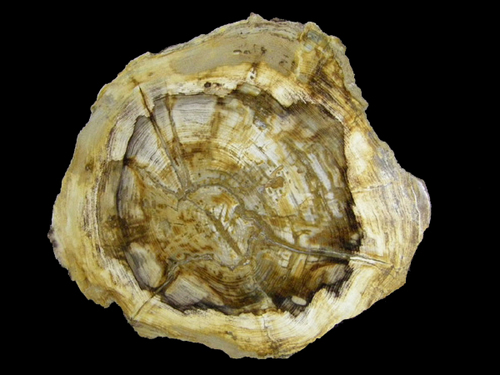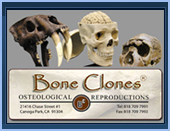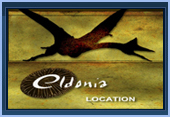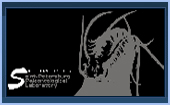일반명 : 나무화석(Petrifiedwood)
학 명 : Locust (회화나무)
지질시대 : 신생대마이오세(Miocene (5 -12 million years ago))
지 층 : Lincoln Creek Formation
원산지 : Yakima Canyon, Eastern Washington U.S.A.
By Ed Strauss estrauss@mashell.com (Please, no attachments)
When most people hear the phrase "petrified wood from Washington State" they think of the Ginkgo Petrified Forest State Park, Saddle Mountain, and Yakima Canyon in Eastern Washington. These are after all the most extensive and well known sites of fossil wood in Washington. Scores of articles have been written about Eastern Washington's petrified wood in scientific journals, geology bulletins, and rock and gem magazines. A good bibliography is included in the excellent article by L Steve Edmondson which appeared in the July/August 1991 issue of Rocks and Minerals. The Columbia plateau basalt flow of Miocene age is not the only host geologic formation of fossil wood in Washington State however. Petrified wood is also found west of the Cascades Mountains.
There are three collecting sites in Southwest Washington mentioned in rock hound guides. They are Salmon Creek near Toledo, Silver Lake near Kelso and Tono near the coal mine. Petrified wood can also be found on Washington beaches but it is scarce (Pattie, 1983). To my knowledge no one has published a serious study of these fossils.
The only published reports of fossil wood from Western Washington that I know of appeared in the Mineralogist (Anonymous, 1936) and Mineral News (Beck 1941). They both tell of a collection of fossil woods from the Chehalis Valley gathered by Hugh Brown and studied by the renowned pioneer of Washington's petrified wood, Professor George Beck, from Washington State College. Quoting Prof. Beck from the articles "...examples of red-to buff- colored silicified wood, mostly water worn pebbles... The absence of palm wood argues against earliest Tertiary for the Chehalis woods...These Chehalis woods match fairly well the lists from the old classic forests of Amethyst Mountain, Yellowstone..." Listed genera included Platanus (sycamore), Licquidambar (sweet gum), Quercus (live oak), Alnus (alder), Fagus (beech), Ulmus (elm), and Tetracentron types among other hardwoods and softwoods.
Charles E. Isham of Vancouver Wa. made a study of leaf fossils from a Puget Series collecting site in the 1950's. His location, known as the "Ladd Mine", is also in this area. Many of the leaf fossils were tentatively identified by Dr. Ralph Chaney and a graduate student, Jack Smiley of the University of California at Berkeley in 1955 (Wehr 1996). So far I have Identified corresponding fossil wood for about half of the genera.
I am studying fossil wood from Southern Pierce and Thurston Counties, Washington. The geology of the collecting sites is Hayden Creek (glacial) drift (Schasse 1987). It is described as "undifferentiated yellowish brown to brown stony till and boulder gravel out wash deposits... probably as old as 130,000 to 140,000 years b.p." The fossil wood was not created by a glacier but some or all of it was moved by a glacier to its present location (Pabian & Zarins 1994). Where it originated is harder to determine.
I received a letter from Kitty Reed of the Wa. DNR. She related sharing a letter I sent with Ray Lasmanis the State Geologist, he agreed with my guess that the Northcraft Formation of middle to late Eocene age (35-45 million years B.P.) was the host geologic formation (Reed 1995). This formation may also underlie the glacial till. The Northcraft includes pyroclastic rocks and tuff breccia which are possible parent materials for the silicification of wood (Schasse 1987, Pabian & Zarins 1984). The association of the fossils with carnelian agate (also found in other sites near the Northcraft) and the absence of ring porous oaks (which evolved later) argue for the Northcraft. The other possible parent formation would be the Ohanapecosh of Oligocene age.
I have indeed found many petrified wood collection sites in the Ashford Hills associated with the Ohanapecosh formation but they were different in three ways. The fossil wood of the Ashford hills is in situ, it is still weathering out of the welded tuff where it was formed.
All the pieces are angular like a broken rock, not appearing water worn. The fossils range in color from tan to brown to black, they contain no red or yellow. All of this circumstantial evidence points to the Northcraft as the most likely parent formation. This formation is interbeded with the Puget Series (Shasse 1984). The Puget Series contains many leaf fossil collecting sites of Eocene age (Wolf 1968).
I have found about one half of the genera identified from the Chehalis woods that Beck examined (Beck 1941). It should be noted that I have not seriously studied the gymnosperm (softwood) fossils yet and half of the angiosperm (hardwoods) genera that I have differentiated have yet to be matched sufficiently to be named. In the future the comparison of Southern Counties woods to the "Ladd Mine" fossils and the Chehalis woods could be even closer. There is also a favorable comparison to the Yellowstone woods of Eocene age (Wheeler et. al. 1977,1978).
Petrified Wood Rattle Snake Hill Sequoia










































 수량을 선택해주세요.
수량을 선택해주세요.





































